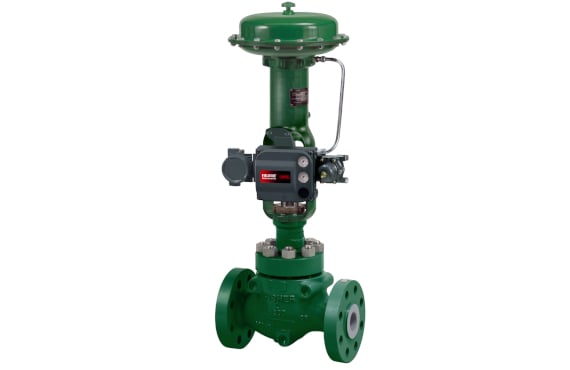Important Aspects to Take Into Consideration When Picking Control Valves
Important Aspects to Take Into Consideration When Picking Control Valves
Blog Article

Maximize Energy Savings and Convenience With Advanced Building Automation Controls
In the world of modern style and facility management, the integration of advanced building automation controls stands as a crucial development. By taking advantage of the power of automation, structures can adapt, respond, and advance in methods that were as soon as unimaginable.
Energy Performance Perks
Energy effectiveness advantages can significantly reduce power intake and functional expenses in structures. Energy-efficient systems, such as innovative building automation controls, can optimize the use of resources like lighting, heating, and air conditioning, leading to reduced energy expenditures over time.
Furthermore, enhanced power efficiency can prolong the lifespan of building equipment and systems. By running a lot more effectively, cooling and heating systems, lighting fixture, and other structure components experience much less wear and tear, causing decreased maintenance and replacement prices. Additionally, energy-efficient buildings frequently command greater home worths and rental prices, providing long-lasting economic benefits to owners.
Moreover, power effectiveness can enhance passenger comfort and efficiency. Effectively controlled indoor atmospheres with optimum lighting and thermal conditions develop a more favorable and positive work area, causing improved employee complete satisfaction and efficiency. On the whole, the energy effectiveness advantages related to sophisticated structure automation controls are complex, incorporating cost savings, ecological stewardship, and resident well-being.
Enhanced Convenience Control
Enhancing comfort control in structure atmospheres requires a sophisticated integration of innovative automation systems for optimum passenger wellness. By using advanced structure automation controls, facilities can customize the interior atmosphere to meet the details demands and preferences of occupants. control valves.
By incorporating these sophisticated controls, structures can not just enhance convenience but likewise boost power efficiency by enhancing system procedures based on actual occupancy and usage patterns. Eventually, focusing on owner comfort via advanced automation systems leads to a more delightful and healthier interior setting.
Functional Performance Improvements

Additionally, the execution of real-time tracking and analytics devices allows building drivers to determine energy inefficiencies and functional abnormalities immediately. By continually keeping track of energy usage patterns and system performance metrics, modifications can be made in real-time to optimize energy intake and make certain peak functional performance. control valves. In addition, integrating need reaction methods into building automation controls can further boost operational effectiveness by dynamically readjusting power usage based on grid conditions and pricing signals
Indoor Climate Optimization
Reliable interior climate optimization is an essential aspect of structure automation controls, guaranteeing passengers' convenience and well-being while optimizing power savings. By using advanced sensors and controls, constructing automation systems can constantly readjust and check temperature level, moisture levels, air high quality, and ventilation to create an ideal indoor atmosphere. Keeping constant and you can look here comfy conditions not just boosts passenger contentment however additionally enhances performance and total wellness.
Indoor environment optimization also plays an important role in power performance. By fine-tuning ventilation, heating, and cooling systems based upon real-time data and occupancy patterns, constructing automation controls can significantly decrease energy usage - control valves. For example, applying methods such as demand-controlled air flow and thermal zoning can aid decrease power waste while making certain that each area of the structure obtains the essential conditioning.

Lasting Atmosphere Production
Structure automation manages not just maximize interior climate problems for energy efficiency and resident comfort however likewise lay this page the structure for producing a lasting atmosphere with calculated monitoring of systems and sources. By integrating advanced structure automation technologies, such as sensing units, actuators, and intelligent software, facilities can adjust and keep an eye on energy usage in real-time to minimize waste and lower their carbon footprint. These systems enable predictive upkeep, recognizing prospective issues prior to they intensify and maximizing devices performance to enhance longevity and performance.
In addition, lasting atmosphere creation extends past energy management to encompass water preservation, waste decrease, and indoor air high quality renovation. Building automation read this controls can regulate water usage, find leakages, and ensure appropriate garbage disposal practices, adding to total sustainability efforts. Furthermore, by checking and regulating air flow and filtering systems, these modern technologies enhance passenger wellness and performance while reducing energy consumption connected with heating and cooling operations.
Conclusion
To conclude, advanced structure automation manages offer substantial advantages in regards to power savings, comfort control, operational effectiveness, indoor climate optimization, and creating a sustainable environment. By executing these controls, structures can accomplish optimum performance while reducing energy consumption and improving resident comfort. It appears that making use of advanced automation innovation is essential in improving building performance and producing a more lasting future.
Power effectiveness benefits can substantially minimize energy usage and functional costs in buildings. On the whole, the energy efficiency benefits linked with innovative building automation controls are diverse, encompassing cost savings, environmental stewardship, and passenger wellness.
Additionally, integrating demand reaction techniques into structure automation controls can additionally improve operational performance by dynamically readjusting power usage based on grid conditions and pricing signals.
Building automation controls not just enhance indoor climate problems for power effectiveness and occupant comfort yet additionally lay the structure for developing a sustainable setting with tactical management of systems and sources.In conclusion, progressed structure automation manages deal considerable benefits in terms of power cost savings, convenience control, functional efficiency, interior climate optimization, and creating a sustainable environment.
Report this page